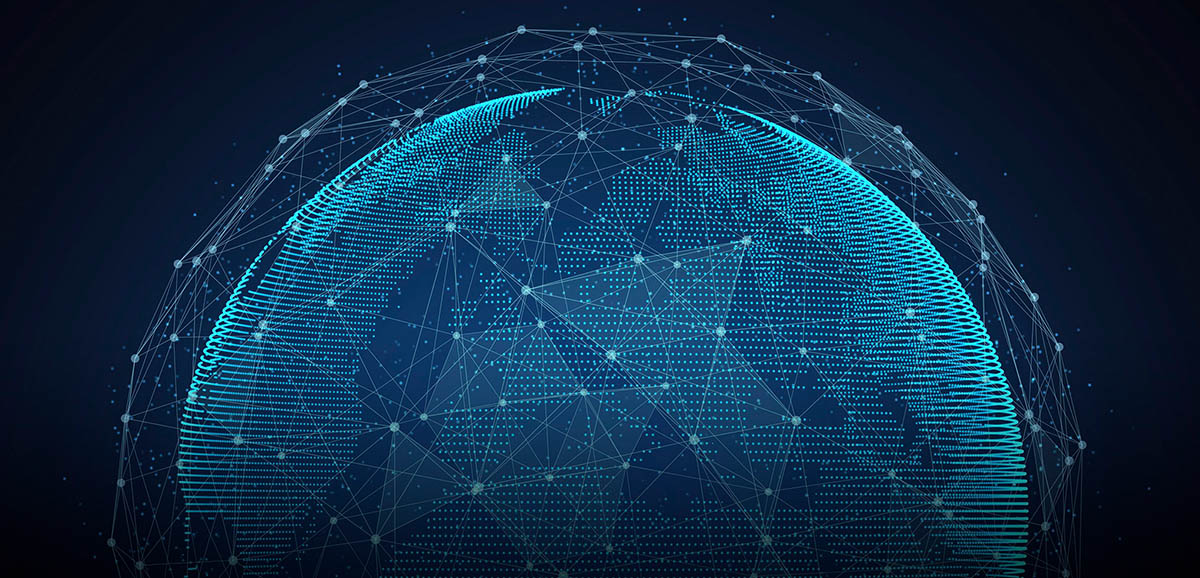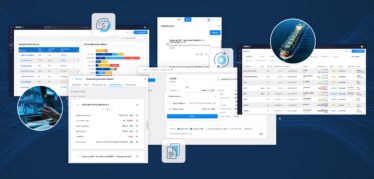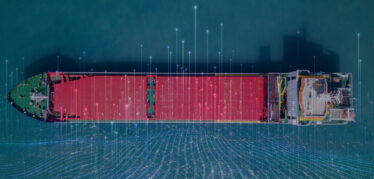Rooted in globalization, the maritime industry has been facilitating the exchange of goods and services for centuries. This sharing of resources requires a great deal of communication and collaboration across supply chains despite boundaries such as language, culture, geography, government, etc. However, as markets open, stakeholders multiply, omnichannel models proliferate, and global competition intensifies, these boundaries are fading away. Companies now have a greater reach, meaning they must operate at a faster and more efficient pace in order to interact with a larger ecosystem of suppliers, partners, and clients.
Inefficiencies that have historically plagued the maritime industry – such as a lack of transparency, intense regulations, unstructured communication, and fragmented data – create even greater boundaries to efficiency and profitability. The growing need for productivity, agility, and transparency is being met by powerful technological advancements, which allow people to process greater amounts of information at a faster pace and with less manual efforts.
As technologies like IoT, Artificial Intelligence, and more arise for data processing and analysis, people, machines, and systems are collecting massive amounts of data and becoming more interconnected. However, without a standard way to exchange and interpret information across the industry, the immense amount of data is actually causing more confusion and noise than clarity. Further, people working in different pockets of the industry care about different things and have different systems for data processing – meaning that we are effectively all speaking in different digital ‘languages.’ These communication gaps are murking up the water and causing traffic jams in the supply chain.
Participants from all corners of the industry are embracing the need to get on the same page. Bridging these gaps and inconsistencies in communication calls for standardization, which can be accomplished either
- At the data entry level, or
- On the back end through a complex, exhaustive process to eliminate inconsistencies in the data
Of course, the latter requires a lot more effort, so it seems to make the most sense to tackle the issue at its core rather than attempt to remediate the situation retrospectively. But, creating unified processes at the data entry level requires the critical masses of the industry to adopt one common standard. Technology provides the means to accomplish this; however, it is only one piece of the puzzle.
Achieving data standardization and seamless connectivity in the maritime industry requires buy-in from key stakeholders, support from and enforcement by regulatory bodies, widespread adoption, and connected digital systems.
Benefits of Data Standardization
Just as the use of a common system within an organization fosters scalability by establishing repeatable workflows that drive business forward, industry-wide standardization can accomplish similar efficiency gains in the interactions between market counterparties. Despite the immense potential benefit of such connection, direct connectivity is currently lacking in the maritime industry.
Direct digital connection is contingent on industry counterparties agreeing on a common system of standards. In a historically siloed and fragmented industry, this can be difficult to achieve. Today, we tend to communicate differently with every external partner, which presents a headwind to efficiency and scalability for everyone involved.
For Vessel Owners & Operators
When we talked to industry-leading owners and operators about their largest pain points around industry connectivity, they highlighted a lack of structure around data sharing. Owners and operators want the ability to share ETA and SOF information in an efficient, structured manner so that they can accomplish tasks in less time. They also want the ability to share information with relevant counterparties in an intentional way, as it is not always productive or necessary to share all information related to a voyage.
Establishing a digital system internally gives owners and operators the ability to view all voyages, and information related to each voyage, in one place. Further, establishing an integrated, external digital ecosystem allows both owner/operators and tonnage charterers to exchange information directly and in the same digital language. Owners and operators would then be able to share specific voyage updates, and provide personalized context around those updates, instantly from their system with the click of a button.
For Tonnage Charterers
When we talked to tonnage charterers about their pain points around data standardization and industry connectivity, they highlighted a lack of transparency. For tonnage charterers, it is top priority to have real-time visibility into shipments. It is also essential to maintain proactive communications with carrier counterparties to track cargo positions and changes. This allows them to plan business better by making informed decisions surrounding commodity production, employees, and other downstream activities reliant on the cargo being shipped.
With direct updates from the owner/operator side via a digital system, tonnage charterers would be able to view all updates and changes to cargoes, as well as in the context of previous updates, through one centralized inbox. This digital inbox would also sync with email and pull messages into the system automatically. This way, all communication streams are consolidated into one.
At Veson Nautical, we believe we can solve the industry’s greatest challenges through collaboration with our clients and partners. By collaborating with industry stakeholders, we can create the best solutions for the way we operate today while also laying the foundation for a sustainable and successful future.
We have begun to lay the groundwork for data standardization and connectivity by working with industry participants on both the owner/operator and tonnage charterer verticals. In doing so, we have defined the current and future state of the industry, identified three key areas that are in most need of data standardization, and established short- and long-term next steps. Read more in our Data Standardization & Connectivity Takeaway Guide.



 Josh Luby
Josh Luby
 Ayodele Fashakin
Ayodele Fashakin
 Ben Thurecht
Ben Thurecht